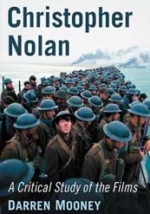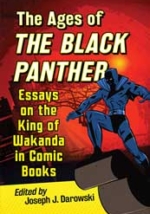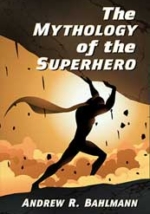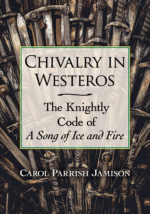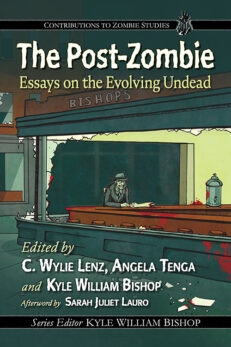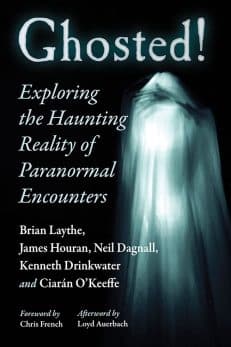We get it: someone in your household wants to bring in a tree while another hasn’t put away the Halloween decorations yet. We suggest using this liminal time to get started with your holiday shopping (and reading). Many of our readers look forward to our traditional post–Thanksgiving holiday sale to fill their shelves, nightstands and gift bags. This year, instead of waiting around for Black Friday, we’re opening up early access to you, our loyal readers and followers, as a way of saying “thank you!” for celebrating with us all year round. From now through Cyber Monday, November 28, get a Santa–sized 40% off ALL titles with coupon code HOLIDAY22! Don’t delay, because when early access ends, the discount will drop to the standard 25%. Happy reading!
Category: Military History
Afghanistan and International Studies Catalog
 Lasting almost 20 years, the war in Afghanistan was America’s longest. Read more about those who fought the war, and about the people of Afghanistan, in the books within our Afghanistan and international studies catalog.
Lasting almost 20 years, the war in Afghanistan was America’s longest. Read more about those who fought the war, and about the people of Afghanistan, in the books within our Afghanistan and international studies catalog.
Fall 2021 New Books Catalog Available Now
 Our Fall 2021 new books catalog is now available—click to see what our authors have in store for the coming months!
Our Fall 2021 new books catalog is now available—click to see what our authors have in store for the coming months!
Military History Sale
 Our extensive catalog of military history books now features more than 1,000 titles in print, and among them are many of our bestsellers. No matter your interests (or those of the history buff in your life), you’re sure to find a good fit. Through Memorial Day, May 31, get 25% off all military history titles with coupon code MILITARY25!
Our extensive catalog of military history books now features more than 1,000 titles in print, and among them are many of our bestsellers. No matter your interests (or those of the history buff in your life), you’re sure to find a good fit. Through Memorial Day, May 31, get 25% off all military history titles with coupon code MILITARY25!
Women’s Studies Sale and New Catalog
 Women made 2020 a banner year for diversity and inclusivity. In sports, representation on and off the field erupted with the leadership of Kim Ng, Sarah Fuller and Katie Sowers. Scientists Emmanuelle Charpentier and Jennifer A. Doudna jointly earned the Nobel Prize in Chemistry. And in politics, women like Cori Bush, Sarah McBride, Yvette Herrell and others were elected to ever-diversifying legislatures, while Kamala Harris ascended to the highest elected position a woman has yet to hold. To honor Women’s History Month and to nurture the path forward, we’re offering 20% off our catalog through March 31st with coupon code WOMEN20.
Women made 2020 a banner year for diversity and inclusivity. In sports, representation on and off the field erupted with the leadership of Kim Ng, Sarah Fuller and Katie Sowers. Scientists Emmanuelle Charpentier and Jennifer A. Doudna jointly earned the Nobel Prize in Chemistry. And in politics, women like Cori Bush, Sarah McBride, Yvette Herrell and others were elected to ever-diversifying legislatures, while Kamala Harris ascended to the highest elected position a woman has yet to hold. To honor Women’s History Month and to nurture the path forward, we’re offering 20% off our catalog through March 31st with coupon code WOMEN20.
Vikings Catalog and Sale
 On the threshold of winter, it is not untoward to turn one’s thoughts to hearty beards. So it is here at McFarland, and ours have specifically turned to Vikings and representations of medieval Nordic-ness in myth, literature and popular culture. We’ve collected all our related McFarland titles into this catalog, and you’ll find a full range of books covering topics such as the intellectual inspirations for Tolkien’s legendarium, the Vikings television series that successfully summoned their historical world, and insights into the people of the great Icelandic medieval sagas. If you have an interest in Norse mythology in heavy metal music, McFarland has a book for that, too! Through December 31, get 30% off these books with coupon code VIKINGS30.
On the threshold of winter, it is not untoward to turn one’s thoughts to hearty beards. So it is here at McFarland, and ours have specifically turned to Vikings and representations of medieval Nordic-ness in myth, literature and popular culture. We’ve collected all our related McFarland titles into this catalog, and you’ll find a full range of books covering topics such as the intellectual inspirations for Tolkien’s legendarium, the Vikings television series that successfully summoned their historical world, and insights into the people of the great Icelandic medieval sagas. If you have an interest in Norse mythology in heavy metal music, McFarland has a book for that, too! Through December 31, get 30% off these books with coupon code VIKINGS30.
Fall 2020 New Titles Catalog Available Now
 Our fall New Titles catalog is now available, featuring 184 forthcoming books from our authors. Browse now!
Our fall New Titles catalog is now available, featuring 184 forthcoming books from our authors. Browse now!
June Transportation Sale
 It’s June, gas prices are cheap, the highways are free of traffic, and holiday destinations are uncrowded. Let’s hit the road (in spirit, if not in deed)! Our automotive history line, including histories of marques famous and obscure, auto racing, biographies, reference works like J. Kelly Flory’s massive American Cars volumes, and much more, is complimented by many excellent works on locomotive, aviation, and maritime history; bicycles; and military transportation. This month, we’re offering ALL transportation titles at 40% off the list price with coupon code TRANSPORTATION40! Use this coupon code on our website through Sunday, June 28. Safe travels from your friends at McFarland!
It’s June, gas prices are cheap, the highways are free of traffic, and holiday destinations are uncrowded. Let’s hit the road (in spirit, if not in deed)! Our automotive history line, including histories of marques famous and obscure, auto racing, biographies, reference works like J. Kelly Flory’s massive American Cars volumes, and much more, is complimented by many excellent works on locomotive, aviation, and maritime history; bicycles; and military transportation. This month, we’re offering ALL transportation titles at 40% off the list price with coupon code TRANSPORTATION40! Use this coupon code on our website through Sunday, June 28. Safe travels from your friends at McFarland!
Military History Sale
 As Memorial Day approaches, we wanted to offer our readers a chance to pick up a good military history book for personal reading, or perhaps as a Father’s Day gift for dad. Through May 31, get 40% off all military history titles with coupon code MILITARY40. Thanks for continuing to support McFarland, and please spread the word!
As Memorial Day approaches, we wanted to offer our readers a chance to pick up a good military history book for personal reading, or perhaps as a Father’s Day gift for dad. Through May 31, get 40% off all military history titles with coupon code MILITARY40. Thanks for continuing to support McFarland, and please spread the word!
True Crime Sale
 April means we’re halfway to our next Halloween, and we think it’s a great time to celebrate all things macabre. This month, we’re offering readers 40% off our most riveting—and often downright frightening—books on real-life monsters and mayhem with our true crime sale. Through April 19th, use coupon code TRUECRIME40 on all of our reads about serial killers, unsolved crimes, famous robberies and more. Browse our true crime catalog here!
April means we’re halfway to our next Halloween, and we think it’s a great time to celebrate all things macabre. This month, we’re offering readers 40% off our most riveting—and often downright frightening—books on real-life monsters and mayhem with our true crime sale. Through April 19th, use coupon code TRUECRIME40 on all of our reads about serial killers, unsolved crimes, famous robberies and more. Browse our true crime catalog here!
New to Kindle, March 2020
The following titles are now available on Kindle:
|
A Century in Uniform: Military Women in American Films
|
|
African American Entertainers in Australia and New Zealand: A History, 1788–1941
|
|
Apocalypse TV: Essays on Society and Self at the End of the World
|
|
Apocalyptic Ecology in the Graphic Novel: Life and the Environment After Societal Collapse
|
|
Autogenic Training: A Mind-Body Approach to the Treatment of Chronic Pain Syndrome and Stress-Related Disorders, 3d ed.
|
|
Baseball in Europe: A Country by Country History, 2d ed.
|
|
Chasing the Bounty: The Voyages of the Pandora and Matavy
|
|
Colonels in Blue—Missouri and the Western States and Territories: A Civil War Biographical Dictionary
|
|
Electric Trucks: A History of Delivery Vehicles, Semis, Forklifts and Others
|
|
Ethics After Poststructuralism: A Critical Reader
|
|
Film History Through Trade Journal Art, 1916–1920
|
|
Final Battles of Patton’s Vanguard: The United States Army Fourth Armored Division, 1945–1946
|
|
George “Mooney” Gibson: Canadian Catcher for the Deadball Era Pirates
|
|
Girl of Steel: Essays on Television’s Supergirl and Fourth-Wave Feminism
|
|
Hollywood’s Hard-Luck Ladies: 23 Actresses Who Suffered Early Deaths, Accidents, Missteps, Illnesses and Tragedies
|
|
Italian Crime Fiction in the Era of the Anti-Mafia Movement
|
|
Japan’s Spy at Pearl Harbor: Memoir of an Imperial Navy Secret Agent
|
|
Joe Quigley, Alaska Pioneer: Beyond the Gold Rush
|
|
John Derek: Actor, Director, Photographer
|
|
Kenny Riley and Black Union Labor Power in the Port of Charleston
|
|
Managing Organizational Conflict
|
|
Nick McLean Behind the Camera: The Life and Works of a Hollywood Cinematographer
|
|
Parenting Through Pop Culture: Essays on Navigating Media with Children
|
|
Philip K. Dick: Essays of the Here and Now
|
|
Quaker Carpetbagger: J. Williams Thorne, Underground Railroad Host Turned North Carolina Politician
|
|
Rhode Island’s Civil War Dead: A Complete Roster
|
|
Rosalie Gardiner Jones and the Long March for Women’s Rights
|
|
Rosenblatt Stadium: Essays and Memories of Omaha’s Historic Ballpark, 1948–2012
|
|
Sacred and Mythological Animals: A Worldwide Taxonomy
|
|
Sailing Under John Paul Jones: The Memoir of Continental Navy Midshipman Nathaniel Fanning, 1778–1783
|
|
Section 27 and Freedman’s Village in Arlington National Cemetery: The African American History of America’s Most Hallowed Ground
|
|
Sicily on Screen: Essays on the Representation of the Island and Its Culture
|
|
Springsteen as Soundtrack: The Sound of the Boss in Film and Television
|
|
Taking Fire!: Memoir of an Aerial Scout in Vietnam
|
|
The 6th Michigan Volunteer Infantry in the Civil War: A History and Roster
|
|
The Civil War in the South Carolina Lowcountry: How a Confederate Artillery Battery and a Black Union Regiment Defined the War
|
|
The General Aviation Industry in America: A History, 2d ed.
|
|
The Man Who Made Babe Ruth: Brother Matthias of St. Mary’s School
|
|
The Showgirl Costume: An Illustrated History
|
|
The USS Swordfish: The World War II Patrols of the First American Submarine to Sink a Japanese Ship
|
|
The Women of City Point, Virginia, 1864–1865: Stories of Life and Work in the Union Occupation Headquarters
|
|
Themes in Latin American Cinema: A Critical Survey, 2d ed.
|
|
Understanding Nazi Ideology: The Genesis and Impact of a Political Faith
|
|
Virtual Tribe: Indigenous Identity in Social Media
|
|
Why the Axis Lost: An Analysis of Strategic Errors
|
2020 Women’s Studies Catalog Now Available
 Celebrate Women’s History Month with our new women’s studies catalog!
Celebrate Women’s History Month with our new women’s studies catalog!
2020 African American Studies Catalog Now Available
 Click here to browse our newest African American Studies catalog!
Click here to browse our newest African American Studies catalog!
FLASH SALE: Vietnam War
 Today only, get 30% off all Vietnam War books with coupon code VIETNAM30!
Today only, get 30% off all Vietnam War books with coupon code VIETNAM30!
CONFERENCES: Upcoming MLA and PCA events
McFarland is exhibiting at a number of regional and national conferences in the coming months, and conferees are encouraged to take the opportunity to peruse our books and meet an editor. Schedule an appointment by emailing us in advance (Layla Milholen, Gary Mitchem, or Dré Person), or stop by the McFarland booth in the exhibit room for a casual conversation with an editor.
Popular Culture Association in the South Sept 26-28, Wilmington, NC, Layla Milholen
Association for the Study of African American Life and History Oct 3-5, Charleston, SC, Dré Person
Midwest Popular Culture Association Oct 10-13 Cincinnati, OH, Layla Milholen
American Folklore Society Oct 16-19, Baltimore, MD, Gary Mitchem
South Central Modern Language Association Oct 24-26, Little Rock, AR, Gary Mitchem
Mid-Atlantic Popular Culture Association Nov 7-9, 2019, Pittsburgh, PA, Gary Mitchem
Film and History Nov 13-17, Madison, WI, Dré Person
National Women’s Studies Association Nov 14-17, San Francisco, CA, Layla Milholen
South Atlantic Modern Language Association Nov 15–17, Atlanta, GA, Gary Mitchem
American Philosophical Association Jan 8-11, Philadelphia, PA, Dré Person
Modern Language Association Jan 9-12, Seattle, WA, Gary Mitchem
Cinema & Media Studies
Comics & Graphic Narratives
Literature
Plants Go to War Reviewed in Booklist
 Plants Go to War: A Botanical History of World War II
Plants Go to War: A Botanical History of World War II
Judith Sumner
“In this impressively researched exploration, esteemed ethnobotanist Sumner takes a scholarly yet totally accessible approach to the myriad ways plant materials were critical to both Allied and Axis war efforts. With balanced attention to domestic sacrifices and ingenuity, Sumner’s astonishing discoveries make this a fascinating read for botany buffs and those steeped in military history.”—Booklist
New Vietnam Memoirs Catalog Available Now
 Browse our latest catalog of Vietnam War memoirs, and, through August 31, get 20% off your order with coupon code VIETNAM19!
Browse our latest catalog of Vietnam War memoirs, and, through August 31, get 20% off your order with coupon code VIETNAM19!
Fall 2019 New Books Catalog Available Now
 Our Fall 2019 new books catalog is now available—browse our authors’ new and forthcoming titles today!
Our Fall 2019 new books catalog is now available—browse our authors’ new and forthcoming titles today!
McFarland 40th Anniversary Sale
 We’re turning 40, and we’re celebrating with a special fortieth anniversary sale! Through June 30, get a 25% discount on ALL books when you use the code ANN2019. And if you’ll be in our area (Ashe County, North Carolina, in the beautiful Blue Ridge Mountains), we’d love to see you at our open house event on Friday, June 14. Thank you for supporting our first 40 years—we look forward to celebrating many more birthdays with you.
We’re turning 40, and we’re celebrating with a special fortieth anniversary sale! Through June 30, get a 25% discount on ALL books when you use the code ANN2019. And if you’ll be in our area (Ashe County, North Carolina, in the beautiful Blue Ridge Mountains), we’d love to see you at our open house event on Friday, June 14. Thank you for supporting our first 40 years—we look forward to celebrating many more birthdays with you.
McFarland Turns 40

On June 14, 2019, McFarland will celebrate its fortieth anniversary with an open house party. From noon to five, our campus at 960 Hwy 88 W, Jefferson, NC will be open to the public with finger food, conversation and tours available, and many of our authors will be in attendance. To stay up-t0-date with event information, follow our event page. Below is a brief company history, with personal thoughts, by founder and editor-in-chief Robert Franklin.
McFarland Publishers Now Forty Years Old
by Robert Franklin
McFarland’s history (founder, Robbie Franklin, me): My close friends Biff and Alicia Stickel were burned out special ed teachers in Connecticut, early 70’s. What to do? Back to the land! They (and their little daughter Maranatha Shone Stickel) drove south till they loved the vibe and the scenery and wound up living on Peak Road from 1972 through part of 1978 (and birthing Micah Stickel). Alicia played piano at the local Baptist church and they were cofounders of the Creston Co-op. I visited them in ’72 (instantly fell for the land and people, the forefinger car salute, the almost drinkable river) and again every year after, and when wife Cheryl Roberts came into my life in 1975, we visited. Soon I was bragging about Ashe County to everybody – “If your car breaks down, the very next person to come along will stop and ask if you need help.” I hope a few readers can recognize the Stickels’ name (he goes by Richard now; they live in Toronto). They are the reason McFarland was begun in Ashe County. We present band of publishers, about fifty in number, owe them great honor.
I did not learn till after we moved here in 1979 that my Revolutionary War ancestor Lieutenant Robert McFarland, after whupping the king at Kings Mountain, lived up here in the 1790s. He then went overmountain to become the first ever sheriff of Greene/Washington County, Tennessee. (I was born in Memphis.)
McFarland & Company, Inc., Publishers is our official name. Founded in April 1979 right here. I had been the executive editor of a smallish scholarly publisher in New Jersey; my mentor/boss/friend Eric Moon (a charismatic Brit) knew before I did it was time for me to go off on “my own” (very misleading words!). The local Ashe County newspaper was failing by 1978 and at first I thought, o.k., I’m an editor type, maybe I can start up a new one. Between summer and Christmas the local fellow David Desautels decided the same thing and very successfully started The Jefferson Times. We became friends and McFarland’s earliest two or three books (including a biography of Soviet leader Brezhnev) were typeset using off-hours time on that new newspaper’s equipment. Katy Zell Taylor was our first fulltime employee (Ashe Central H.S. yearbook editor!) and did a lot of typesetting and correcting. Dental Care in Society was our first published book, in 1980 (ask me some day).
After deciding up in New Jersey to stay with book (versus newspaper) publishing, I phoned the Jefferson Post Office in February 1979 to set up a box number mailing address – they said people had to apply in person. Whew! So I flew from Newark to Tri-Cities, Tennessee (what did I know?), rented a car, drove to Jefferson (hours!), filled out a form, got back in the car, drove back to Tri-Cities, and got back home not long before day was done.
A couple of months later, on April 1, 1979, Cheryl and I packed our former life stuff (including hundreds of books—heavy!) in a small U-Haul, attached it to our VW bug, and began to drive south, the Stickels’ Ashe County on our minds.
My ninth-grade homeroom friend (Toledo, Ohio), Mike Strand, had helped with some financial and emotional support and we stopped at his place in Maryland overnight. Armed with an Ashe return address, I had written several hundred letters (yes!) on a yellow pad on my knees in the front seat while Cheryl drove, and Mike arranged for a nearby university used-to-weird-hours thesis typist to type them all overnight; we mailed them April 2 and drove on. We were headed to my parents’ (retired librarians) house in Charlottesville, with me again writing several hundred short letters on my lap. We had arranged for a similar heroic overnight typing fest (the two days: 905 letters to all the authors I had addresses for, saying my former employer will take good care of you, they’re wonderful publishers—But if by any chance they turn you down for something, give us a shot!).
The U-Haul was too much for the Bug and our left rear wheel came OFF 20 miles north of Charlottesville—but stayed in the wheel well (having nowhere else to go), behaving violently. Definitely exciting (it was my stint at the wheel). We lost two or three days; I split logs for my parents’ fireplace.
In Ashe County finally, we scooped up some reply mail from authors. Already! And we soon secured a sweet farmhouse in Dillard Holler (landlord Jesse Dillard; Mom-figure Clyde Dillard; horse-plus-himself quarter-acre-garden plower Jones Dillard). The Dillard families taught us a great deal about what being “conservative” actually means. (One day Jesse turned up with several hundred fence rails he stored near “our” (his) house; no immediate need, but “I got ’em for 25¢ each.” They stayed stacked for years…) The birth of our sons Charles (in ’81), Nicholas (’85) and William (’89) certainly emphasized the Dillards’ lessons. (Jesse routinely tossed hay bales up into pickup trucks in his 80’s. Lemme be him!)
McFarland itself started out next to the H & R Block office, near the florist, in Jefferson, a small space but enough for our first couple of years. The Jefferson Post Office turned out, under our loyal friend Charles Caudill, to be one of our greatest early assets. He was so supportive as McF struggled through ignorance of mass mailings, foreign registered packages (we learned together!), “library rate” book mailings, etc. McFarland moved in 1981 or ’82 to the Mountain View shopping center between the towns and quickly expanded there. In 1982 we lucked out by having Rhonda Herman agree to join the tiny staff, doing all the “business” stuff while I coddled authors, edited manuscripts and coached the typesetters. High school senior Cynthia Campbell became a stalwart and sixteen year old Cherie Scott was a wow of a typesetter, along with Katy Taylor, on our new typesetting equipment. Within three years we were producing 40 or so new books a year (in 2018 the total was nearly 400).
Meanwhile, the people of Ashe County all around us showed interest, great surprise (“A Publisher in Ashe County?” read one huge Jefferson Times headline), and affection. Highly significant was Hal Colvard, repeatedly trusting us, at Northwestern bank, another wonderful early friend of McFar. We warmly greeted each other on Saturday mornings at the post office for many years after he retired.
By 1984 we’d moved to our present location, which became five buildings on both sides of the road. We’re technically inside Jefferson town limits. We took Mackey McDonald’s trim brick ranch house, whacked walls left and right, pushed out here, there… Years later we added a second floor – my joke is, the main building now has more roof lines than an Italian hill village.
We are, or were, a library-oriented scholarly and reference book publisher. (We’ve grown much more into a straight-to-people operation today but libraries are still a critical component of our efforts.) Two of our earliest works were Library Display Ideas by my sister Linda Franklin and Free Magazines for Libraries, by Adeline Mercer Smith: they were terrific sales successes. Another 1982 biggie was Anabolic Steroids and the Athlete by William M. Taylor, M.D. We hit that topic just as it exploded nationwide. One of the most memorable early works was Keep Watching the Skies! by Bill Warren (1982). This huge book expertly, humorously covers in amazing depth every American science fiction movie of the 1950s and a lot of Hollywood Big Names spoke highly of it in print. We were famous! (Well, the author was…)
McFarland was an early strong supporter of the local arts scene. (There are hundreds of paintings hanging in four of our buildings.) Cheryl Roberts and I founded the publication ARTS/DATES for the Arts Council in 1980 or 1981, and for more than a decade paid all its expenses as it grew grander and ever more useful. Loyal Jane Lonon (Arts Council head) wangled twice for us an N.C. Governor’s Business Award for the Arts and Humanities (go to Raleigh; shake hands; pose for photos; eat dinner).
I joined the strong, active Ashe County Little Theatre and played Dracula for them in 1981, sporting fangs crafted by the late Brett Summey, who became a good friend, now truly missed. Jane Lonon and I wowed the crowd in The King and I and Tom Fowler and I rolled them in the aisles in Greater Tuna. When I played Macbeth, the high school English teacher promised extra credit to student attendees.
McFarland’s output grew rapidly—by the 1990s we were producing hundreds of new titles each year and our staff had doubled, then tripled in size. Margie Turnmire had arrived in the mid–’80s, a beautiful soul and a very smart lady: director of finance and administration. In 1995 the Ashe County Chamber of Commerce honored us with a Business of the Year award (I believe we were the third such) and in 1998 The Wall Street Journal ran a feature article on us, showing that we are a bit unusual in our range of offerings. We have a commanding position in, for example, Vietnam combat memoirs, chess history, baseball (teams, eras, bios), automotive history and popular culture (film, TV, comics, literature…). We’ve done many reference books (though with Wiki-Google etc. now such works are uneconomical to produce); a Library Journal book of the year was local John Stewart’s African States and Rulers in 1989. Lots of Civil War, World War II, American/European/World history, literary criticism. Authors from all over the world. That part’s fun! As I write this we have published 7,800 titles.
We had busted out of our onsite warehouse and used the old Ashe County Jail on Buffalo Road for several years in the 80s! Ultimately we had to move our shipping operation into the building next to the Arts Council owned by Jim Reeves. On its outer wall facing the Arts Center we had Jack Young do the town’s first mural (now painted over): “Ashe County through the Ages.” Finally, Mike Herman built us an entirely new warehouse across the road from our main building in about 1990. Fourteen years later, then-vice-president Rhonda Herman (now president) moved the company onto firmer financial footing by arranging to install state-of-the-art printing equipment in that warehouse (we’d always used out-of-house printing firms).
Cheryl and I love Ashe County. We love the people. We love the trees, the river. (We came in first in the Mixed Expert class canoe race four or five years ago!) I even like the curves driving 23 miles to and fro our home to work (we live practically on the Tennessee line, up in the Flatwoods). The finger salute still works and the tire zing helps me think through business challenges. Our three boys, Charles, Nicky and William, also revere their place of birth. McFarland has about 50 employees, all of whom are exceptionally talented. When I got here to start the company, I truly had my pick of some of the best talent available anywhere, and I mean Anywhere. Our typesetters know every Hungarian or Swedish accent mark there is!
The local merchants have become business partners. Local artists have paintings hanging in our offices. The restaurants are great for business lunches. The weather—sublime (I learned to fell trees and the art of minimizing the lifting and stacking of logs our first year here); I like winter! Mike Herman built our house and the numerous renovations of our current space—impossible to imagine a better job. Stan Barker did some fabulous stone walls at our home. I feel both cozy and exhilarated just getting up in the morning! Ashe County, we’re for you!
McFarland is having an open house (snacks, drinks, tours) starting at noon on Friday, June 14th. We want to show our thanks to a community that has nurtured us for 40 years. Come one, come all!
Author Charles “Jerry” Juroe Receives France’s Legion of Honor
 Charles “Jerry” Juroe, who ran publicity on 14 James Bond movies, starting with Dr. No in 1962, will be awarded France’s prestigious Legion of Honor award for excellence in military conduct on June 6th, 2019 during D-Day Celebrations in Normandy. Juroe, 96, was part of the historic invasion on June 6th, 1944. After his WWII service, Juroe had a long career in the film industry, starting out as a publicist for Paramount Pictures, then serving as the personal publicist for stars like Bob Hope, Bing Crosby and Marilyn Monroe when she was filming The Prince And The Showgirl in England. Jerry was based in Europe for many years, working for every major studio. He worked with The Beatles on their UA movies, A Hard Day’s Night and Help!, but is best known for his association with the Bond films and his fruitful working relationship with legendary producer, Albert “Cubby” Broccoli. In 2018, he published his memoir, Bond, the Beatles and My Year with Marilyn: 50 Years as a Movie Marketing Man.
Charles “Jerry” Juroe, who ran publicity on 14 James Bond movies, starting with Dr. No in 1962, will be awarded France’s prestigious Legion of Honor award for excellence in military conduct on June 6th, 2019 during D-Day Celebrations in Normandy. Juroe, 96, was part of the historic invasion on June 6th, 1944. After his WWII service, Juroe had a long career in the film industry, starting out as a publicist for Paramount Pictures, then serving as the personal publicist for stars like Bob Hope, Bing Crosby and Marilyn Monroe when she was filming The Prince And The Showgirl in England. Jerry was based in Europe for many years, working for every major studio. He worked with The Beatles on their UA movies, A Hard Day’s Night and Help!, but is best known for his association with the Bond films and his fruitful working relationship with legendary producer, Albert “Cubby” Broccoli. In 2018, he published his memoir, Bond, the Beatles and My Year with Marilyn: 50 Years as a Movie Marketing Man.
African American Studies Catalog and Sale
Biographies and Memoirs Catalog and Sale
 McFarland’s biographies and memoirs cover the fascinating life stories of both iconic personalities and quiet heroes. On sale now, browse hundreds of titles from history, sports, movies, music, science & technology, literature, military history, transportation and more. When you order direct from our website using the coupon code BIOGRAPHY, print editions of all biographies, autobiographies and memoirs are 20% off now through February 15.
McFarland’s biographies and memoirs cover the fascinating life stories of both iconic personalities and quiet heroes. On sale now, browse hundreds of titles from history, sports, movies, music, science & technology, literature, military history, transportation and more. When you order direct from our website using the coupon code BIOGRAPHY, print editions of all biographies, autobiographies and memoirs are 20% off now through February 15.
Spring 2019 New Books Catalog Now Available
 Our spring 2019 new books catalog is now available—click here to browse our forthcoming titles!
Our spring 2019 new books catalog is now available—click here to browse our forthcoming titles!
Holiday 2018 Sale—Get 25% Off All Books!
 The holidays are a special time at McFarland—in addition to publishing scholarship, many of us also participate in the tree harvest, as Ashe County produces more Christmas trees than any other county in the United States. If you live in the Southeast, you may have a little bit of McFarland in your living room right now! This season, please consider putting some McFarland under the tree for the readers in your life. To make your holiday shopping easier, we’re offering 25% off of ALL books through the end of the year! On our website, use coupon code HOLIDAY18, or call us at 800-253-2187. For inspiration, browse our new catalog of of gift ideas for readers. Happy holidays from your friends at McFarland!
The holidays are a special time at McFarland—in addition to publishing scholarship, many of us also participate in the tree harvest, as Ashe County produces more Christmas trees than any other county in the United States. If you live in the Southeast, you may have a little bit of McFarland in your living room right now! This season, please consider putting some McFarland under the tree for the readers in your life. To make your holiday shopping easier, we’re offering 25% off of ALL books through the end of the year! On our website, use coupon code HOLIDAY18, or call us at 800-253-2187. For inspiration, browse our new catalog of of gift ideas for readers. Happy holidays from your friends at McFarland!
Four New Titles Reviewed in October Issue of Choice
 Freedom Narratives of African American Women: A Study of 19th Century Writings
Freedom Narratives of African American Women: A Study of 19th Century Writings
“Compelling…crucially contributing to feminist recovery work and scholarship in African American studies, Freedom Narratives of African American Women is required reading for those interested in 19th-century America…essential.”
The Postmodern Joy of Role-Playing Games: Agency, Ritual and Meaning in the Medium
“Groundbreaking study…this volume is required reading for RPG and gaming scholars…essential.”
The American Soldier, 1866–1916: The Enlisted Man and the Transformation of the United States Army
“This is a rewarding study of enlisted men in the post–Civil War era…recommended.”
Organized Crime in the United States, 1865–1941
“Challenges widely accepted views…an interesting historical analysis…recommended.”
Four Titles Reviewed in September Issue of Choice
 Four new titles are reviewed in the September issue of Choice!
Four new titles are reviewed in the September issue of Choice!
We Rise to Resist: Voices from a New Era in Women’s Political Action
“The volume serves not only as a springboard for classroom discussions but also as a unique documentary source for future generations. We Rise to Resist contextualizes third-wave feminism by highlighting the diversity of women’s experiences while offering a space for reflection and a call for political action…highly recommended.”
The Los Angeles Dodgers Encyclopedia
“Comprehensive…excellent…this is a well-conceived and concise compendium of all things related to this iconic baseball team and an invaluable reference for all libraries…highly recommended.”
Repeating and Multi-Fire Weapons: A History from the Zhuge Crossbow Through the AK-47
“Well illustrated with photographs and diagrams and including a glossary and brief bibliography, this is a thorough treatment the topic and useful for those interested in military history…recommended.”
World Epidemics: A Cultural Chronology of Disease from Prehistory to the Era of Zika, 2d ed.
“Engagingly written…this accessible volume is well suited for popular collections and public libraries…recommended.”
Four New Titles Reviewed in August Issue of Choice
 Four new titles are reviewed in the August issue of Choice!
Four new titles are reviewed in the August issue of Choice!
The Mistaken History of the Korean War: What We Got Wrong Then and Now
“Few can challenge [Edwards’] passion in defense of the men he represents. Anyone wanting to comprehend the meaning of the Korean War for Americans cannot go wrong with this book. Essential.”
Motor City Champs: Mickey Cochrane and the 1934–1935 Detroit Tigers
“This book serves as an excellent introduction to the business and financial aspects of professional baseball teams in the 1930s…an engaging and informative read…recommended.”
Protecting the Home Front: Women in Civil Defense in the Early Cold War
“Recommended.”
The Californios: A History, 1769–1890
“Recommended.”
July Transportation Sale: Get 25% off ALL Transportation Titles
 Some of you may share a guilty failing of our editors. When they receive proposals and manuscripts, while reading about almost any car–learning how it took shape, its quirks and qualities, how it changed over the production run–desire starts to sprout. Previously ignored vehicles (and even disliked vehicles) show their hidden appeal. On more than one occasion, an editor has looked at ads and undertaken calculations (financial, emotional, marital) for said cars.
Some of you may share a guilty failing of our editors. When they receive proposals and manuscripts, while reading about almost any car–learning how it took shape, its quirks and qualities, how it changed over the production run–desire starts to sprout. Previously ignored vehicles (and even disliked vehicles) show their hidden appeal. On more than one occasion, an editor has looked at ads and undertaken calculations (financial, emotional, marital) for said cars.Four New Titles Reviewed in Choice
Four new titles are reviewed in the July issue of Choice!
Scenes from an Automotive Wonderland: Remarkable Cars Spotted in Postwar Europe
“Any car spotter will enjoy this book, and may find a 26 horsepower favorite. The book is presented in a pleasant, easily readable format and contains a useful index and excellent bibliography… recommended.”
Women in the American Revolution
“effective… enriches the breadth of scholarship published on this topic… Wike’s multicultural net captures the multifaceted roles of women… recommended.”
The First 50 Super Bowls: How Football’s Championships Were Won
“This readable book will no doubt be enjoyed by his intended audience of football and sports fans… recommended.”
Henry Green: Havoc in the House of Fiction
“Nuanced… one leaves this study with a thorough knowledge of Green’s oeuvre and full insight into his mastery of high modernism… recommended.”
Fall 2018 New Books Catalog Available Now
 Our Fall 2018 catalog is now available—click here to see our authors’ forthcoming books!
Our Fall 2018 catalog is now available—click here to see our authors’ forthcoming books!
Military History Summer Sale
June has arrived, and with it McFarland’s military history sale. Whether you’re a military scholar, armchair historian, veteran, genealogist, or general reader interested in gripping nonfiction, now is the time to save. When you order direct from our website using the coupon code MILITARY25, print editions of all military history books are 25% off June 1 through June 15. Best of luck to all with your summer reading lists!
Newly Published: The 96th Pennsylvania Volunteers in the Civil War
The 96th Pennsylvania Volunteers in the Civil War
David A. Ward
The 96th Pennsylvania Volunteers infantry regiment was formed in 1861—its ranks filled by nearly 1,200 Irish and German immigrants from Schuylkill County responding to Lincoln’s call for troops. The men saw action for three years with the Army of the Potomac’s VI Corps, participating in engagements at Gaines’ Mill, Crampton’s Gap, Salem Church and Spotsylvania. Drawing on letters, diaries, memoirs and other accounts, this comprehensive history documents their combat service from the point of view of the rank-and-file soldier, along with their views on the war, slavery, emancipation and politics.
Newly Published: The Last Days of the United States Asiatic Fleet
The Last Days of the United States Asiatic Fleet: The Fates of the Ships and Those Aboard, December 8, 1941–February 5, 1942
Greg H. Williams
After the attack on Pearl Harbor (December 7), American sailors of the Asiatic Fleet (where it was December 8) were abandoned by Washington and left to conduct a war on their own, isolated from the rest of the U.S. naval forces. Their fate in the Philippines and Dutch East Indies was often grim—many died aboard burning ships, were executed upon capture or spent years as prisoners of war.
Many books have been written about the ships of the U.S. Asiatic Fleet, yet few look into the experiences of the common sailor. Drawing on official reports, past research, personal memoirs and the writings of war correspondents, the author tells the story of those who never came home in 1945.
Newly Published: Terrorism Worldwide, 2017
Terrorism Worldwide, 2017
Edward Mickolus
This fourth comprehensive study of international terrorist attacks covers 2017, during which the Islamic State suffered continued reversals yet retained its status as the most active, well-financed and well-armed terrorist group worldwide. Organized by region and country, the study covers domestic and international incidents around the world, outlining significant trends. The author offers several indicators of what to watch in the coming years. The single-year format allows readers access to the most up-to-date information on terrorism, while geographic focus more easily facilitates regional comparison.
Newly Published: “Don’t tell father I have been shot at”
“Don’t tell father I have been shot at”: The Civil War Letters of Captain George N. Bliss, First Rhode Island Cavalry
George N. Bliss
Captain George N. Bliss of the First Rhode Island Cavalry survived some 27 actions during the Civil War. Midway through the war, he served nine months at a conscript training camp in Connecticut, where he sat on several courts-martial. In September 1864, in a skirmish at Waynesboro, Virginia, he single-handedly charged into the 4th Virginia “Black Horse” Cavalry. Badly injured and taken prisoner, he was consigned to the notorious Libby Prison in Richmond.
A colorful correspondent, Bliss detailed his experiences in letters to a close friend and sent dispatches to a Providence newspaper. His candid writings are rich with details of the war and his own opinions. The editors describe how, following the war, Bliss sought out the Confederates who almost killed him and formed friendships with them that lasted for decades.
Newly Published: The 758th Tank Battalion in World War II
The 758th Tank Battalion in World War II: The U.S. Army’s First All African American Tank Unit
Joe Wilson, Jr.
In 1941, the U.S. Army activated the 758th Tank Battalion, the first all-black armored unit. By December 1944 they were fighting the Axis in Northern Italy, from the Ligurian Sea through the Po Valley and into the Apennine Mountains, where they helped breach the Gothic Line—the Germans’ last major defensive line of the Italian Campaign.
After the war the 758th was deactivated but was reformed as the 64th Tank Battalion, keeping their distinguished insignia, a tusked elephant head over the motto “We Pierce.” They entered the Korean War still segregated but returned fully integrated (though discrimination continued internally). Through the years, they fought with almost every American tank—the Stuart, the Sherman, the Pershing, the Patton and today’s Abrams.
Victorious over two fascist (and racist) regimes, many black servicemen returned home to what they hoped would be a more tolerant nation. Most were bitterly disappointed—segregation was still the law of the land. For many, disappointment became a determination to fight discrimination with the same resolve that had defeated the Axis.
Newly Published: “Get the hell off this ship!”
“Get the hell off this ship!”: Memoir of a USS Liscome Bay Survivor in World War II
James Claude Beasley
James Claude Beasley was a typical American teenager in the 1940s—a child of the Great Depression with an abiding commitment to family and country. With the outbreak of World War II, he enlisted in the Navy at 18. His plainspoken, personal memoir recounts his three years of service (1942–1945), from his induction at Winston Salem, North Carolina, to the sinking of his ship, the escort carrier USS Liscome Bay, by a Japanese submarine, through the end of the conflict and his return to civilian life.
Newly Published: Chasing Charlie
Chasing Charlie: A Force Recon Marine in Vietnam
Richard Fleming
Richard Fleming served as a scout with the elite U.S. Marine 1st Force Reconnaissance Company during the bloodiest years of the Vietnam War. Dropped deep into enemy territory, Recon relied on stealth and surprise to complete their mission—providing intelligence on enemy positions, conducting limited raids and capturing prisoners. Fleming’s absorbing memoir recounts his transformation from idealistic recruit to cynical veteran as the war claimed the lives of his friends and the missions became ever more dangerous.
Newly Published: Repeating and Multi-Fire Weapons
Repeating and Multi-Fire Weapons: A History from the Zhuge Crossbow Through the AK-47
Gerald Prenderghast
From the very earliest days of organized warfare, combatants have wanted to develop weapons with more firepower. This has inevitably led to a wide variety of repeating weapons, capable of a degree of sustained fire without reloading.
Based largely upon new research, this book explores the history of repeating and multi-fire weapons, beginning with the Chinese repeating crossbow in the 4th century BCE, and ending with the world’s most common firearm, the Kalashnikov AK-47. The author describes the potency of the machine gun in World War I, the development of the semiautomatic pistol and the role of the submachine gun in improving the effectiveness of the infantryman.
Newly Published: The Mistaken History of the Korean War
The Mistaken History of the Korean War: What We Got Wrong Then and Now
Paul M. Edwards
Much of the history of the Korean War has been misinterpreted or obscured. Intense propaganda and limited press coverage during the war, coupled with vague objectives and an incomplete victory, resulted in a popular narrative of partial truth and factual omission. Battlefield stories—essentially true but often missing significant data—added an element of myth. Drawing on a range of sources, the author, a Korean War veteran, reexamines the war’s causes, costs and outcomes.
New Spring 2018 Catalog Available Now
 Our Spring 2018 New Books catalog is now available—click to see what our authors have in store for the new year!
Our Spring 2018 New Books catalog is now available—click to see what our authors have in store for the new year!
New Vietnam War Memoirs Catalog Available
Newly Published: A Life in Code
A Life in Code: Pioneer Cryptanalyst Elizebeth Smith Friedman
G. Stuart Smith
Protesters called it an act of war when the U.S. Coast Guard sank a Canadian-flagged vessel in the Gulf of Mexico in 1929. It took a cool-headed codebreaker solving a “trunk-full” of smugglers’ encrypted messages to get Uncle Sam out of the mess: Elizebeth Smith Friedman’s groundbreaking work helped prove the boat was owned by American gangsters.
This book traces the career of a legendary U.S. law enforcement agent, from her work for the Allies during World War I through Prohibition, when she faced danger from mobsters while testifying in high profile trials. Friedman founded the cryptanalysis unit that provided evidence against American rum runners and Chinese drug smugglers. During World War II, her decryptions brought a Japanese spy to justice and her Coast Guard unit solved the Enigma ciphers of German spies. Friedman’s “all source intelligence” model is still used by law enforcement and counterterrorism agencies against 21st century threats.
President’s Blog: Vietnam War Memoirs

 McFarland was not even five years old when we stretched our editorial mission beyond mainstream library books to include military memoirs. Founder and president Robert Franklin received an unsolicited manuscript from a Vietnam War veteran and felt McFarland just HAD to publish it (Vietnam-Perkasie: A Combat Marine Memoir, 1983). The author, William D. “Bill” Ehrhart, would become an iconic voice for soldiers struggling to understand their Vietnam War experience, through his teaching, poetry, essays and interviews. McFarland went on to publish many, many such memoirs on the Vietnam War, World War II, Desert Storm and even World War I as well as diaries and letter collections from Civil War soldiers.
McFarland was not even five years old when we stretched our editorial mission beyond mainstream library books to include military memoirs. Founder and president Robert Franklin received an unsolicited manuscript from a Vietnam War veteran and felt McFarland just HAD to publish it (Vietnam-Perkasie: A Combat Marine Memoir, 1983). The author, William D. “Bill” Ehrhart, would become an iconic voice for soldiers struggling to understand their Vietnam War experience, through his teaching, poetry, essays and interviews. McFarland went on to publish many, many such memoirs on the Vietnam War, World War II, Desert Storm and even World War I as well as diaries and letter collections from Civil War soldiers.
Some years ago, I was representing McFarland at a conference on military history. During the course of the conference, a professor-type stopped into our booth to thank McFarland for publishing so many firsthand accounts of combat experiences. He indicated that it was an important perspective that added richly to battle statistics, battle descriptions and the politics of war. He said that our memoirs were a unique body of work, unlike the publishing output of any other publisher. It was good to get that kind of feedback from the field.
The collection of McFarland Vietnam War memoirs now represents more than three decades of publishing but its relevance will never be obsolete. The Vietnam War was almost certainly the last war using the draft, the result being soldiers from every socioeconomic stratum fighting shoulder to shoulder. From a sales standpoint, the Vietnam War memoirs were eclipsed by World War II accounts early on. This continued to be true until around 2010 when Vietnam War memoir sales numbers started showing greater strength. The sales interest has been particularly strong with ebook readers. This morning’s Amazon rankings of our best sellers in this area are:
Killer Kane: A Marine Long-Range Recon Team Leader in Vietnam, 1967–1968 by Andrew R. Finlayson (2013)—#2 Biographies & Memoirs > Leaders & Notable People > Military > Vietnam War
Rice Paddy Recon: A Marine Officer’s Second Tour in Vietnam, 1968–1970 by Andrew R. Finlayson (2015)—#4 in Kindle Store > Kindle eBooks > Biographies & Memoirs > Historical > Military & Wars > Branches > Marines
The Crouching Beast: A United States Army Lieutenant’s Account of the Battle for Hamburger Hill, May 1969 by Frank Boccia (2013)—#4 in Books > Biographies & Memoirs > Leaders & Notable People > Military > Vietnam War
Ghosts and Shadows: A Marine in Vietnam, 1968–1969 by Phil Ball (1998)—#1 in Books > Biographies & Memoirs > Leaders & Notable People > Military > Vietnam War
Pucker Factor 10: Memoir of a U.S. Army Helicopter Pilot in Vietnam by James Joyce (2003)—#21 in Kindle Store > Kindle eBooks > Biographies & Memoirs > Historical > Military & Wars > Branches > Air Force
To celebrate this success, Veterans Day, and most of all, our authors, their service and their remarkable stories, the McFarland staff has created an opportunity for everyone to get a meaty slice from two dozen of these fine works in a book-length collection. ’Nam Raw offers in ebook form excerpts of 24 of our Vietnam War memoirs. Because the experiences are so varied from every branch of service and the perspectives from various ranks, this is an extraordinary window on the Vietnam War experience. There are gripping descriptions of the fear of battle, bloodlust and questioning whether actions were murder alongside soaring descriptions of heroism. The best part is that you can get a copy here FREE. NOTE: You must have a computer, smartphone or e-reader to view ebook.
For convenience and in hopes of the widest distribution possible, we are also offering this unique ebook on Amazon, Google Play and Barnes & Noble (available soon) for a tiny fee. Tell us what you think!
 Follow Rhonda Herman on Twitter (@RGBHerman).
Follow Rhonda Herman on Twitter (@RGBHerman).
Vietnam Memoirs Sale Extended!
 This summer, we published a catalog of our Vietnam War memoirs, and it included a discount offer for our readers. Thanks to you and your enthusiastic response, we’re extending the sale! Through September 30, 2016, use the coupon code VIETNAM to get 20% off any book in this catalog!
This summer, we published a catalog of our Vietnam War memoirs, and it included a discount offer for our readers. Thanks to you and your enthusiastic response, we’re extending the sale! Through September 30, 2016, use the coupon code VIETNAM to get 20% off any book in this catalog!
April 2016 Newsletter
Our April 2016 newsletter is now available—if it’s not in your inbox, and you’d like to receive our newsletters in the future, please take a moment to subscribe!
Hurry to take advantage of our holiday sale!
Take Advantage of our Holiday Sale!
 Still shopping for holiday gift ideas? Check out our holiday catalog, and get 30% off your order of two or more books with the coupon code HOLIDAY2015!
Still shopping for holiday gift ideas? Check out our holiday catalog, and get 30% off your order of two or more books with the coupon code HOLIDAY2015!
Ashe County: Where McFarland Resides
Authors, customers, friends, and fans: if you’ve ever wondered what McF’s mountain town is like, have a look at this neat response about our area from a recent vacationer. (A special nod, too, to our Boondocks friends who regularly support us in a number of ways.) We love where we live!
CONFERENCE: Medieval Studies
One of our favorite times of year is the chance to dwell among 3,000+ of the world’s most knowledgeable medievalists. This week McFarland is participating in the 50th annual International Congress on Medieval Studies in Kalamazoo.
Ireland and Irish-interest books
Naomh sásta lá patrick ar!
We hope you’ve got your green on! To help celebrate the day, we’re offering a 20% discount on all our Ireland and Irish-interest offerings now through Sunday, March 22nd.
Author of the Week: John Stewart
It’s Celebrate an Author Wednesday and our hats are off to John Stewart, winner of numerous reference book awards, and a McFarland author for more than three decades. (Really!)
His latest work is Jefferson Davis’s Flight from Richmond, a thorough study of the events surrounding April 2, 1865, when Richmond, the Confederate capital, was evacuated and burned, when the government fled, when slavery was finished in North America, and when Union forces entered the city and the outcome of the Civil War was effectively sealed. The book closely examines all relevant source material, much of it newly discovered by Stewart himself.
For more info or to order this title (or his many others), click through to the pages in McFarland’s online catalog.
African States and Rulers, 3d ed.
Photographs by Wilbur D. Jones Jr
Coastal NC folks: stop by for a look at works by our busy and talented Wilbur D. Jones, Jr.
Photographs by Wilbur D. Jones Jr.
4-8 p.m. February 25, 2015
Hannah Block Historic USO / Community Arts Center
120 South Second Street / Downtown Wilmington
This exhibit of photographs spanning seven decades by a globe-trotting Wilmington native will be on display fromFeb. 25 through March 26, 2015. The exhibit will open with a reception from 4 to 8 p.m. on Feb. 25 in the USO/Community Arts Center, featuring beer, wine, hors d’ouevres and music by Duke Ladd. Exhibit hours are 9 a.m. to 9 p.m. Monday through Thursday, 9 a.m. to 5 p.m. Friday, and 9 a.m. to 1 p.m. Saturday. The public is invited and admission is free. The photographs are the work of Wilbur D. Jones, Jr., a Wilmington author and military historian. A retired Navy captain, former assistant to President Gerald Ford and World War II historical tour leader, Jones took photographs in dozens of countries all over the world from 1956 to 2014. His wide variety of images cover the people he encountered, landscapes and cityscapes, cultural sites and the aftermaths of wars, both ancient and modern. While his historical specialty took him to numerous World War II battlefields in Europe and the Pacific, some of which are featured in the show, Jones’ photographs span a much broader range. Examples include street life in Hong Kong and Japan in the 1950s, ruins of medieval castles along the Rhine, and the present-day waterways and domestic life of Holland. Jones’ travels have taken him to 30 countries on four continents, plus most of the major island groups in the Pacific, and to dozens of the world’s greatest cities, from Amsterdam to Tokyo. He is a member of the Cape Fear Camera Club and of the Wilmington Art Association.
McFarland Celebrates 35 Years
 On April 1st, 1979, founder Robert McFarland Franklin departed Plainfield, New Jersey, heading south in a Volkswagen bug towing a U-Haul. With wife Cheryl behind the wheel, Robert began company operations on a yellow pad in his lap.
On April 1st, 1979, founder Robert McFarland Franklin departed Plainfield, New Jersey, heading south in a Volkswagen bug towing a U-Haul. With wife Cheryl behind the wheel, Robert began company operations on a yellow pad in his lap.
Thirty-five years ago, libraries provided almost the sole market (but a robust one!) for the heavily-researched books that McFarland made its specialty. Over the decades, the company won ever-growing numbers of devoted readers who appreciated the care McFarland and its authors lavished on our books. Our authors, a throng of thousands now, teach us something new every day.
We’re having an open house Friday, June 20, from noon until 5:00. Join us for tours, conversation, punch, finger food, art and books.
CONFERENCE: International Congress on Medieval Studies
 Kalamazoo, Michigan, is the home of Bell’s Brewery and the International Congress on Medieval Studies. If you are in K’zoo, stop by the McFarland book stand and remind senior acquisitions editor Gary Mitchem that we’re counting on him to return with some Hopslam and a rune-hallowed seax!
Kalamazoo, Michigan, is the home of Bell’s Brewery and the International Congress on Medieval Studies. If you are in K’zoo, stop by the McFarland book stand and remind senior acquisitions editor Gary Mitchem that we’re counting on him to return with some Hopslam and a rune-hallowed seax!
Celebrate 2014 with the best possible gift: books!
Our holiday sale ends today, Dec. 31st, so don’t delay! Best wishes to all from your McFarland friends…happy reading! Enjoy 20% off your order through today. On the McFarland website, use coupon code HOLIDAY in the cart as you are checking out. Or, call toll-free 800-253-2187 (Mon-Fri 8:00am to 4:30pm Eastern Time). http://www.mcfarlandbooks.com/2013/11/holiday-sale/
CALL FOR PAPERS: Veterans in Society
“Veterans in Society: Broadening the Discourse”
2nd Annual Veteran Studies Research Conference 2014 (VSC2014)
Virginia Tech & Hotel Roanoke, Roanoke, VA April 27–28, 2014
Call for Papers
An interdisciplinary conference, sponsored by the Center for the Study of Rhetoric in Society (CSRS) at Virginia Tech, will be held at the Hotel Roanoke & Conference Center to bring together multiple perspectives on the many issues surrounding veterans in society. Our goal is for the conference to lead to the formation of a multi-disciplinary, international scholarly community with its own calendar of events and digital presence. This year’s conference will broaden the discussion by focusing on the role of the arts and the humanities in shaping policy and addressing some of the difficult social issues faced by veterans and their families.
Topics may address but are not exclusively restricted to the following questions:
- When governments and the private sector offer services to veterans, they project identities on people they label “veterans.” In what respects are there blind spots or problematic assumptions in the existing research and service-delivery agendas that disadvantage some veterans?
- Who “counts” as a veteran? Have some kinds of service, experiences, needs, or potentials arbitrarily been privileged (or devalued) over others?
- How have veterans themselves made meaning of their military and civilian experiences?
- What do historical, comparative, and literary perspectives bring to our understanding of military service and the post-military experiences of veterans vis-à-vis their civilian societies? Conversely, in what respects might such “lessons” be spurious?
Finally, because this research area of veterans studies is broadly defined, we solicit research that
- Invites scholars and service providers – and veterans – to examine the experiences of military personnel and veterans from countries other than the United States, other wars than the recent American-led conflicts in Iraq or Afghanistan, and other settings than active duty in hot conflicts;
- Discusses other people whose experiences substantially paralleled and even intersected those of wartime military veterans (e.g., diplomats, journalists, civilian contractors in their various capacities) but who are not usually regarded as veterans;
- Analyzes veterans’ use of politics and civil society, not as clients with needs defined by service providers but as active participants;
- Analyzes representations of veterans in literature, film, social media, or other genres;
- Discusses / represents how veterans use literature, music, and other creative media, whether as creators expressing themselves or as audiences for whom those creations may have special significance or value.
Cornerstones of the Event
The event will begin on Sunday night with a production by Outside the Wire (www.outsidethewirellc.com), a social impact company that uses theater and a variety of other media to address pressing public health and social issues, such as combat-related psychological injury. Their Theater of War (ToW) presents readings of Sophocles’ Ajax as a catalyst for a facilitated town hall discussion about suicide, combat stress, alcohol and substance abuse, and the impact of war on families. For the past three years, this groundbreaking initiative has been a catalyst for powerful dialogue at military installations worldwide, as well as at colleges, universities, and regional theaters. More than 100 acclaimed actors have participated, including Blythe Danner, Paul Giamatti, Charles S. Dutton, Terrence Howard, David Strathairn, Debra Winger, and Dianne Wiest. At least one actor of this caliber will perform.
The second foundational element of our event will feature a session entitled, “Growing Up Military,” led by Donna Musil, the founder of the nonprofit Brats Without Borders, who wrote and directed the award-winning film Brats:
Our Journey Home. This film documented the “hidden American subculture” of more than 15 million people raised in the military system. After screening key sections of the film, Donna Musil will discuss her experiences working with military brats of all ages, including considerations of the ways in which today’s young (~18 and under) military kids—having grown up in a decade of war—might also be seen as veterans.
In addition, we will offer a panel entitled “Support Our Troops? A Community in Dialogue.” In August 2013, a Virginia Tech professor published a controversial op-ed piece with Salon.com on why he objects to corporate fundraising campaigns that use the phrase “support our troops.” In the weeks that followed, community members participated in wide-ranging discussions responding to the article and language choices surrounding the military in society. This panel will include representatives from both military and civilian perspectives; panelists will address strategies for making conversations across ideological differences more productive.
We welcome all suggestions for the conference, as well as offers to chair sections and round-table discussions.
Submission Guidelines
The conference organizers anticipate that most successful proposals will be for papers presenting completed research and technical papers. However, we encourage proposals that present promising, provocative work in progress as well as academically sound research that may use nontraditional formats/media.
Authors should submit abstracts of no more than 500 words for blind review: do not include author names, affiliations, or other personally identifiable information.
All submissions should conform to a widely accepted style that will be intelligible to an interdisciplinary audience (e.g., APA, MLA, Chicago).
Important Dates
- Jan 10, 2014: Submission due
- Jan 30, 2014: Notification (Accept, Conditional Accept, or Reject)
- July 1, 2014 (estimated): Submission of contributions to proceedings
- Sept 15, 2014 (estimated): Public availability of proceedings
Procedures
As previously, we hope the findings presented at VSC2014 will generate wide-ranging conversations that span disciplines, institutional affiliations, generations, and veteran/military/civilian status. We encourage high-level participation from all quarters, including professionals in fields pertaining to veterans, independent scholars, graduate students, and advanced undergraduates.
Authors will present their research in two phases:
- Proposals. Please submit an abstract of no more than 500 words prepared for blind peer review and a cover letter providing contact information for the author(s). The results described must not be under consideration for publication elsewhere.
- Contributions to proceedings. Authors will have a reasonable, limited time to revise their formal presentation’s content and formatting for publication in the online conference proceedings. Authors may also include slide decks of the presentations, handouts, and other supplemental materials as part of the proceedings. Multimedia elements such as video or audio clips may be incorporated into the papers or submitted as supplemental files. Contributions to the proceedings will be curated by the Virginia Tech libraries to promote their widespread discovery, access, and preservation at no cost to authors or the public. Authors will retain their own copyrights.
Icelanders in the Viking Age: The People of the Sagas
 Noted authority Dr. William R. Short, the author of Icelanders in the Viking Age: The People of the Sagas, is having an active summer. Once again, he is teaching a summer course in Iceland at Háskólasetur Vestfjarða (University Center of the Westfjords). Short is also prominently featured in the documentary Viking Fighting Moves from the Sagas, newly released through the non-profit Hurstwic organization. The documentary is the third in a series produced by Hurstwic.
Noted authority Dr. William R. Short, the author of Icelanders in the Viking Age: The People of the Sagas, is having an active summer. Once again, he is teaching a summer course in Iceland at Háskólasetur Vestfjarða (University Center of the Westfjords). Short is also prominently featured in the documentary Viking Fighting Moves from the Sagas, newly released through the non-profit Hurstwic organization. The documentary is the third in a series produced by Hurstwic.
Icelanders in the Viking Age (“highly recommended” by Choice) is now on sale through McFarland with a coupon (see the weekly coupon here).
Weekly Deal: Vikings
James Arness Paperback Has Been Announced
 The late James Arness penned one of McFarland’s all-time bestsellers. The autobiography of the World War II vet and television icon, originally published in its library edition on September 11, 2001, is coming to paperback soon.
The late James Arness penned one of McFarland’s all-time bestsellers. The autobiography of the World War II vet and television icon, originally published in its library edition on September 11, 2001, is coming to paperback soon.
There are many personal revelations of interacting with some of the Gunsmoke family ensemble, such as Miss Kitty, Doc and Festus. His own work as a producer is covered. Throughout are rare, previously unpublished photographs from the author’s personal collection. Appendices include comments by show biz colleagues and fellow Gunsmoke alumni, and a sampling of letters received from his legions of fans. Actor and fellow Gunsmoke performer Burt Reynolds has written a foreword to the book.
















